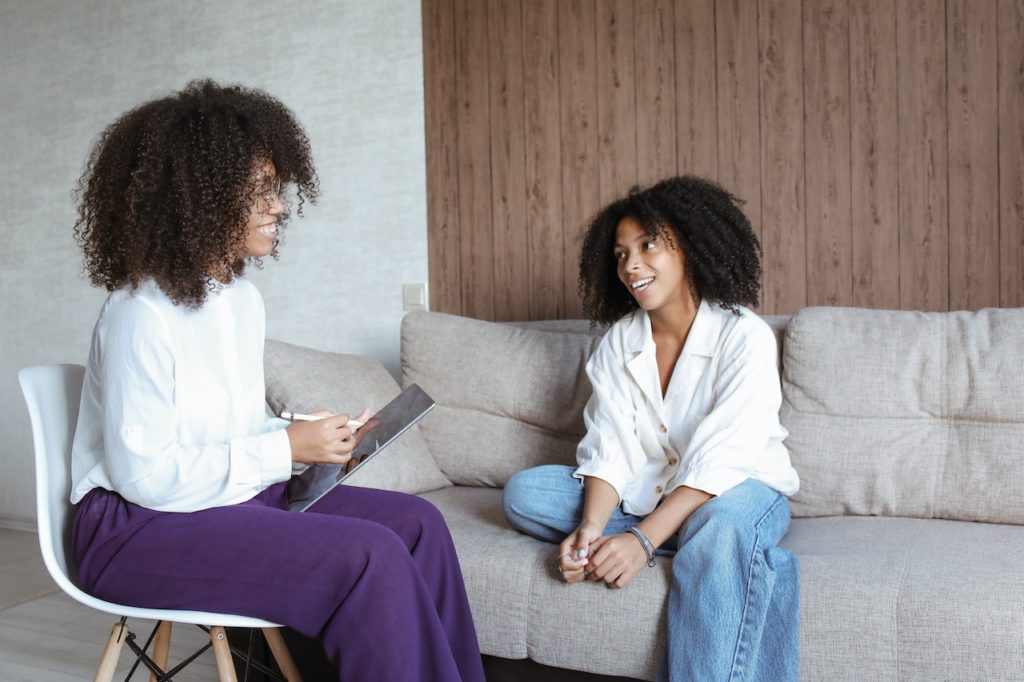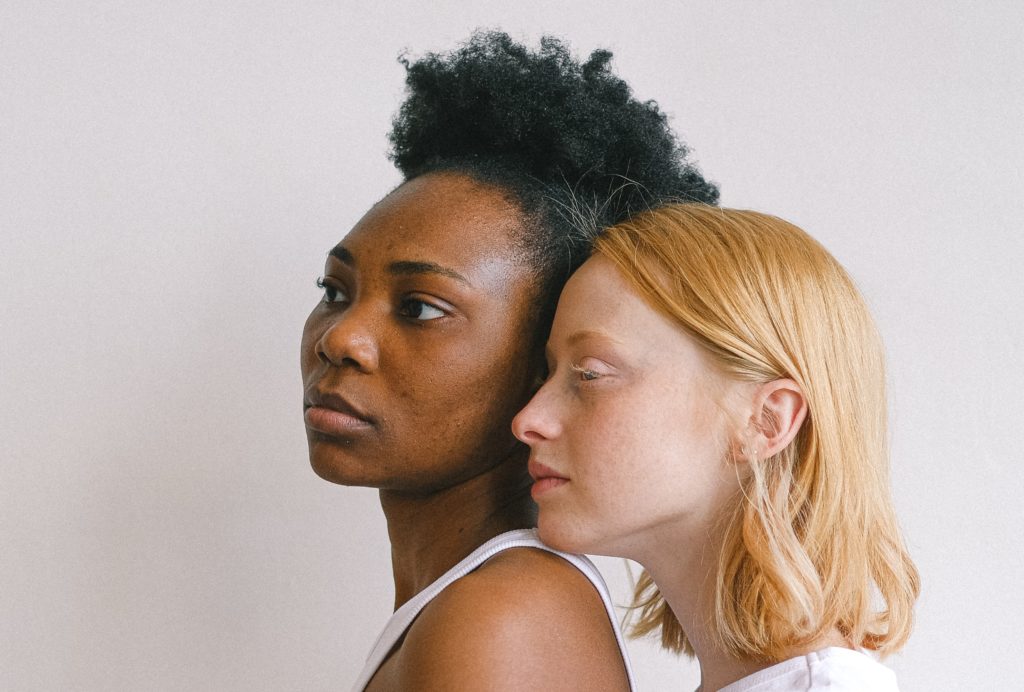Have you been considering therapy, but aren’t sure about taking the plunge? Are you worried about what to do, or whether you’d screw it up? Here’s a play-by-play of what a first therapy session looks like, so you can decide what you’re ready for, and what kind of therapist is right for you.
Getting Comfortable
Therapy starts with finding a comfortable place to prepare for your session. If you’re seeing a therapist in-person, their office will usually have a waiting area with chairs, a couch, maybe magazines or a water cooler. You might talk to a receptionist if it’s a larger agency, and they’ll hand you paperwork at the first therapy session. You might pay before or after session.
Therapists don’t really ask for the “lie down and stare at the ceiling while monologuing” anymore. You totally can if you want to, though. There may even be blankets or stuffed animals you can borrow for extra comfyness!
If you’re seeing an online therapist (like me!) then you have options. Most of my clients do therapy at home, often with a cup of coffee, or a dog in their lap. Some clients will have sessions from their car (while parked) or workplace. This is okay as long as it’s a completely private space that you’ll have for the full 50 minutes. You’ll also need to be in the same state your therapist is licensed in, since our licenses usually don’t cross state lines. Most of us use Zoom or other HIPAA-compliant video platforms, and I find that progress usually comes faster with video. But, phone calls and text-based therapy are also available.
Many therapists are switching to digital paperwork and billing. For instance, my clients get a secure link where they can do the paperwork, put a credit/debit card on file, and download any receipts or other documents they need. I love this because you can just set and forget it.
The First Therapy Session Special…Paperwork!
Your first session will involve reviewing the paperwork, as well as talking about what brings you to therapy. The papers are pretty dry stuff, mostly about scheduling, payment, digital security and privacy policies. But on the bright side, you’ll know exactly what charges to expect, how to handle the internet going out mid-session, accessing your records, and things like that. This also lets you decide if you’re comfortable with your therapist’s style before sharing really personal, heavy stuff with them.
I tend to meander a bit while talking about the paperwork. Because it’s more fun to hear your thoughts instead of just monologuing. But that’s alright; anything we don’t get to, we’ll have time for in the next session.
Identifying Your Problems
You probably had a chance to chat with your therapist over the phone about your concerns. And the paperwork will usually have a space for that, too. But this is where you get to elaborate more and start working together!
It’s normal to feel some anxiety or awkwardness in the first therapy session. It’s okay if you’re not sure where to start or how to put things into words. We’re trained to help you find the words. If you’ve found the right therapist for you, it’ll feel like they’re listening to you, that they want to get to know you as a person, and that they know what they’re talking about.
Safety Check-Ins
At some point your therapist will gauge whether any issues could affect your immediate health or well-being. These issues might involve domestic violence, suicidal thoughts, substance use, eating disorders, or financial hardship. Some therapists will ask you outright, some will have you fill out the answers in the paperwork, and others will play it by ear.
I like to poke a little fun at myself and flat-out call these the Awkward Questions. Because that’s what they are! Very personal things to tell someone you’ve just met! But you can say “pass,” or tell me as much or as little as you like. Besides safety, I’ll also check with people about whether they have concerns about their physical health, or intersectional issues like race, gender, and orientation. Maybe you do, maybe not, but the topic’s open in case it’s on your mind later.
Wrapping up the First Therapy Session
Between the paperwork, the Awkward Questions and identifying the issues, that usually leaves a few minutes to explore your options moving forward. I like to list ideas I have for coping skills, habits, and other techniques that I think could be useful for you. If there are specific diagnoses you’re interested in, we’ll assess for that in the next session to make sure there’s enough time. You’re also welcome to add things you want to get to later, too.
There’s a lot of ground to cover in the first few sessions. It can be nerve-wracking to reach out, and heavy subjects to talk about. But my clients have told me that they ended the first session feeling relieved and hopeful. Like there was a path open for getting better. If that’s the feeling you get from your therapist, you’ve probably found a good one.
Did this article help you feel more confident about whether to try therapy or not? Are there questions I didn’t answer? Let me know! I’m always happy to help people find the right healthcare for them.


